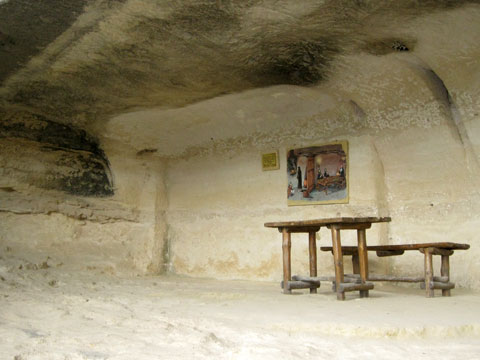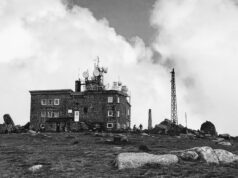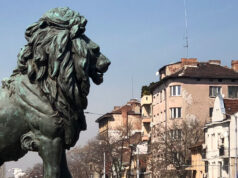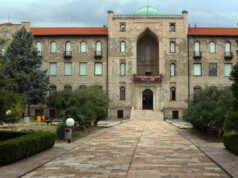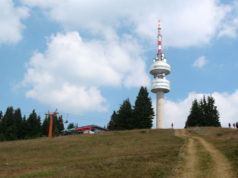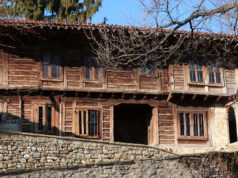The Aladzha Monastery is a treasure of Bulgarian spiritual history, preserving the remains of a large cave monastery complex and other ancient and medieval ruins surrounding the site.
Rock Monasteries in Bulgaria
Rock monasteries hold an important place in Bulgarian spiritual history. Frequently carved out of limestone cliffs, evidence suggests that the use of these places predates even the arrival of Christianity in Bulgarian lands.
The earliest Christian remains, carvings in rock-hewn cells, have been dated to late antiquity, when the first wave of Christianity passed through the Balkan Peninsula during the 4th through 6th centuries. By the time of the Bulgarian arrival towards the end of the 7th century, most of the rock monasteries were abandoned.
King Boris’s adoption of Christianity as the state religion in 864 opened the door for a revival of these spiritual communities. This process was encouraged through the remainder of the first Bulgarian Kingdom, and continued under Byzantine rule during the 11th and 12th centuries.
The Second Bulgarian Kingdom ushered in a cultural renaissance during the 13th and 14th centuries, often called the “Golden Age” of Bulgaria. As spiritual renewal swept the land, old rock monasteries reopened, and many new ones were established. The Aladzha Monastery was a part of this revival. Investigation of chapel frescoes suggests that the life of the monastery reached its height during this time.
Aladzha Monastery
The origins of Aladzha Monastery are unknown, but it is thought to date from sometime during the 12th century. Even its original name has been lost. The current name comes from the Turkish word for motley, or multi-colored, probably in reference to the colorful frescoes that once decorated the interior walls.
The monastery is carved into a limestone cliff about 40 meters high. It was constructed on two levels, connected by an outdoor staircase. The lower level consists of the monastery church, private cells, the kitchen and dining hall, the crypt, and a small cemetery chapel. The upper level contains the monastery chapel, built in a natural rock recess at the eastern end of the cave complex. Very little of the once colorful frescoes remains, but standing on location it is easy to imagine how beautiful it must have been in its heyday.
The monastic community at Aladzha adhered to the hesychast tradition of the Orthodox church, which stressed prayer and solitude as means to experience God.
The Turkish conquest of Bulgaria at the end of the 14th century brought the life of the monastery to its end. Though it was abandoned at least for some time, its subsequent history through the centuries remains unclear.
Other Historical Remains near Aladzha Monastery
In the vicinity of the monastery are other historical remains, including rock-hewn cells called the Catacombs, an early Christian basilica, a fortress, and a group of buildings from late antiquity.
The Catacombs are a separate series of caves located about 700 meters west of the main monastery. Excavation of the site confirms its existence from at least the 4th century, with evidence that it continued in use into the 6th century. The catacombs were likely incorporated into the life of the main monastery during the 13th and 14th centuries.
Getting There:
Aladzha Monastery is located 17kilometers north of Varna and 3 kilometers west of the Golden Sands Resort in the Golden Sands Nature Park. The site can be reached easily by car via Route 9, then following the roadsigns to the monastery. The local bus stop is a 5 minute stroll from the monastery.
Information:
Aladzha Monastery
Golden Sands Nature Park
9007 Golden Sands
Bulgaria
(t) +359 52 35 54 60
(e) [email protected]
(w) www.amvarna.com
Hours of operation:
1 May to 31 October, 09:00-22:00 daily
1 November to 30 April, 09:00-16:00 mon-fri, closed weekends
Admission:
Adults – BGN 5
Children – BGN 2
Show Tickets:
BGN 15 per person for groups up to 20 people
BGN 10 per person for groups of more than 20 people
Guided Tour:
In Bulgarian or Russian – BGN 20
Image Gallery for Aladzha Monastery:


